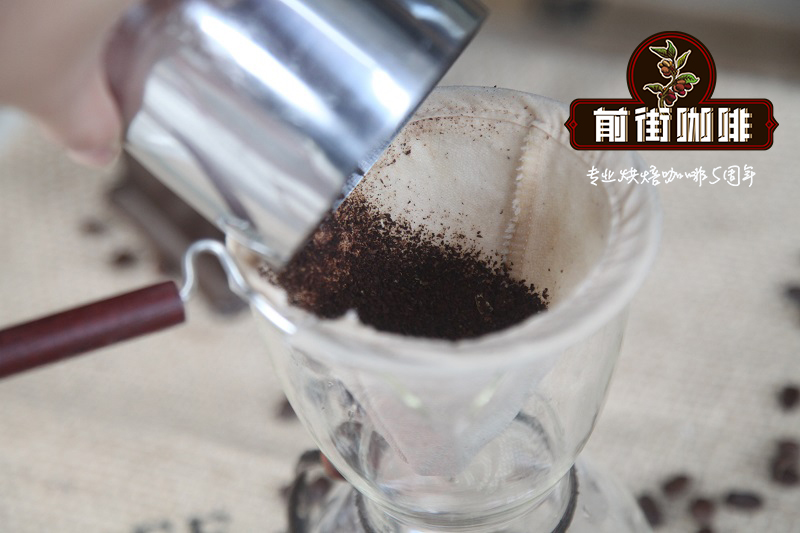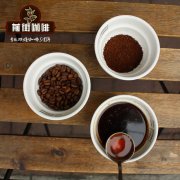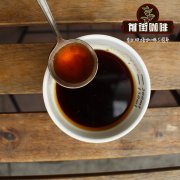How to drink Nicaraguan Javanica Coffee in the New season

Professional coffee knowledge exchange more coffee bean information please follow the coffee workshop (Wechat official account cafe_style)
Nicaragua, located in the middle of Central America, is the largest country in China and the United States, bordering Honduras in the north, Costa Rica in the south, the Caribbean Sea in the east and the Pacific Ocean in the west. The eastern part is the coastal plain, the high temperature and rainy climate belongs to the tropical maritime climate, and the western part is the coastal lowland with more active volcanoes. The north-central part is the highland, with an average annual temperature of 18 ℃ and an annual precipitation of 1500 MULMUR 2500 mm. Matagalpa is the highest quality coffee producing area in Nicaragua, and there is a heavyweight coffee estate worth introducing-the lemon tree (El Limoncillo). The estate is located in the plateau of Matagalpa at an altitude of 950murmur1300 meters above sea level, and there are towering coniferous forests around the coffee trees, providing shade for the growth of coffee trees. This allows coffee trees to be exposed to sunlight while protecting them from being burned by the scorching sun.
Endangered legendary variety
JavaNica is derived from the Java long bean (Java-Long-Berry), as its name implies, from the Indonesian island of Java. This variety comes from the iron pickup system and is rarely grown in Java because of its poor disease resistance. It is said that Irwin's father got a bag of Java seeds when he funded a car stopper and successfully planted them on his own estate. In 2007, he took part in the Nicaragua Excellence Cup National Competition and won the runner-up, which exceeded the champion of that year, setting off a huge topic in the coffee industry. Of course, Lemon Tree Manor not only grows JavaNica varieties, but also the famous Pakamara species. If you have the opportunity, you will also buy a toaster cup to test it and share it with you.
After baking this morning, I couldn't help but try a pot at noon. Very soft taste, clean, sweet and sour like ripe fruit, delicate and elegant, very delicious!
Nicaraguan coffee-brewing analysis
Recommended cooking methods: siphon, hand flushing
Degree of grinding: 3.5 (Fuji R440, Japan)
V60 filter cup, 15g powder, water temperature 91-92 degrees, grinding 3.5.The ratio of water to powder is close to 1:15
33 grams of water is steamed for 25s
Segment: water injection to 100ml cut off, slow water injection to 225ml
That is, 30-100-95
Other suggestions for trickling extraction:
Normal pressure, recommended grinding degree of 3.5-4 / water temperature 92 °C
Philharmonic pressure, recommended 2.5 grinding degree, water temperature 88 °C
Hand punch: 3.5 degree of grinding, water temperature 89 °C
END
Important Notice :
前街咖啡 FrontStreet Coffee has moved to new addredd:
FrontStreet Coffee Address: 315,Donghua East Road,GuangZhou
Tel:020 38364473
- Prev

Introduction to the perfect Manor in Cauca Valley | Bourbon Pointu pointy bourbon coffee flavor
For more information about coffee beans, please follow the Coffee Workshop (Wechat official account cafe_style) perfect Manor Colombia Caf Inmaculada is the new estate invested by Mr. Camilo in Colombia in 2011. Camilo is a coffee landowner who is crazy and passionate about coffee and full of ideas about growing raw beans. In 1999,
- Next

Huila Vera snail manor introduces the flavor of washed round bean coffee
Professional coffee knowledge exchange more coffee bean information please pay attention to the coffee workshop (Wechat official account cafe_style) is located in southwestern Colombia's Vera producing area, on the valley slope formed by the western seaside mountains and eastern mountains, is one of the well-known Colombian boutique coffee producing areas, but also the southernmost region of the boutique coffee growing area, with high latitudes and
Related
- Detailed explanation of Jadeite planting Land in Panamanian Jadeite Manor introduction to the grading system of Jadeite competitive bidding, Red bid, Green bid and Rose Summer
- Story of Coffee planting in Brenka region of Costa Rica Stonehenge Manor anaerobic heavy honey treatment of flavor mouth
- What's on the barrel of Blue Mountain Coffee beans?
- Can American coffee also pull flowers? How to use hot American style to pull out a good-looking pattern?
- Can you make a cold extract with coffee beans? What is the right proportion for cold-extracted coffee formula?
- Indonesian PWN Gold Mandrine Coffee Origin Features Flavor How to Chong? Mandolin coffee is American.
- A brief introduction to the flavor characteristics of Brazilian yellow bourbon coffee beans
- What is the effect of different water quality on the flavor of cold-extracted coffee? What kind of water is best for brewing coffee?
- Why do you think of Rose Summer whenever you mention Panamanian coffee?
- Introduction to the characteristics of authentic blue mountain coffee bean producing areas? What is the CIB Coffee Authority in Jamaica?

